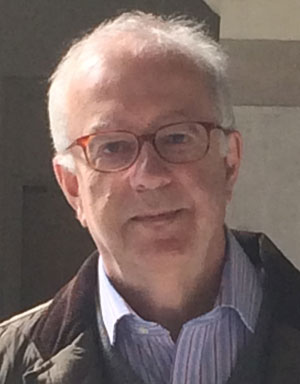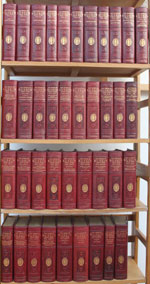To the Alps with Ruskin: An Interview with Keith Hanley
 Q. Where do you come from?
Q. Where do you come from?
KH. I was born in Lancashire and educated by the Salesians before going up to Lincoln College, Oxford, to read English. I lectured in Sweden and Germany before returning to do a B.Litt on Wordsworth, who was at the centre of my Romantics research for many years.
After a series of temporary attachments at Manchester, Hull and Oxford, I settled at Lancaster, where I first of all founded and directed the Wordsworth Centre, closely involved with Jonathan Wordsworth as chair of the Wordsworth Trust.
Q. And at some point your focus shifted from Grasmere to Coniston, that is, from Wordsworth to Ruskin?
KH. I had initiated the transfer to Lancaster of the John Howard Whitehouse Ruskin Collections of books, manuscripts and drawings from Bembridge School — a small school on the Isle of Wight founded by a disciple of Ruskin's, which finally closed in 1997. The collection is now housed on the Lancaster campus in the purpose-built Ruskin Library. That led to the setting up of the Ruskin Research Centre. But as you say, Wordsworth and Ruskin have much in common. They both have domestic museums in the Lakes, with many associated activities with which the Lancaster centres have collaborated over a long period.
Q. As a writer, Ruskin is somehow all-encompassing...

KH. Certainly Ruskin is a highly demanding polymathic author to confront — his collected works span 39 huge volumes, not to mention his artworks, and if you get at all deeply involved you will never get away from him! But nor would I wish to. There is so much varied material that the fascination is continuous and one project seamlessly leads into another.
Ruskin takes you in very many directions, and not least as a cultural guide throughout Western Europe, especially France, Switzerland and Italy. Indeed, you might see his whole labyrinthine writings as a mediated journey through the history and hotspots of European culture, and of course that journey arises from his real travels back and forth throughout his life on what he called ‘the Old Road’, from Calais to Venice.
Q. That brings us to the Continental diary project — to his first discovery of that Old Road.
KH. The aim is to assemble the fullest representation of this most formative foray along that road, and it includes an account not only the geographical routes but also the modes of transport, the various technical paraphernalia, and the emergence of an interdisciplinary critical methodology which was to inform the rest of his career. My co-editor, Caroline Hull, put together a catalogue of the drawings he made, which were exceptionally gifted. This was in 1835, in the last generation before the invention of photography.
Q. Ruskin was just 16 in 1835. By definition these writings are juvenilia, and some of them read that way — playful, precocious pieces for his friends or family, rather like Jane Austen's earliest stories. But the diary itself feels more earnest. You would guess all of it as the work of somebody much older, but the diary especially so, I think?
KH. Yes, Ruskin's precocity makes his juvenile writing particularly teasing. He's on the cusp of being impressively learned on the one hand and yet still very much an immature schoolboy on the other. In a way that is another aspect of these early journals which seems formative — I mean, that ambivalence was to some extent going to last throughout his career, a mixture of extraordinary intellectual development along with an undeveloped personal life. Perhaps that is a common fate for some great scholars?
Q. Do you take the Old Road yourself?
KH. It's true that my own life is made up of reading, walking and travelling. The Ruskin allure has taken me often to explore northern French cathedrals, to the Alps in Savoy, and, of course, to Venice among many other favourite cities. But my current research project has led me further afield in search of nineteenth-century sacred geographies, including especially to Japan at present and the related study of comparative religions. I have abiding interests in nineteenth-century theology and British watercolours. And I visit the US at least once each year in connection with the interdisciplinary journal which I co-edit, Nineteenth Century Contexts, and spend long periods of every year in the Polish countryside with my wife who was born there.
Q. Outside of your academic life, what do you read for pleasure?
KH. As a professor of literature my reading habits are pretty compulsive, but some authors I go back to most are G. K. Chesterton and Graham Greene. I have a particular weakness for nineteenth-century French theology.
John Ruskin's Continental Tour 1835: The Written Records and Drawings, edited by Keith Hanley and Caroline S. Hull, was published by Legenda in 2017, and comes out in paperback in Spring 2018. On Saturday 10 February, it was awarded the Ruskin Society Book Prize for 2017.
full news feed • subscribe via RSS